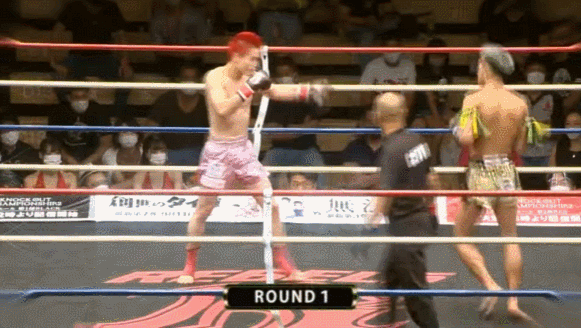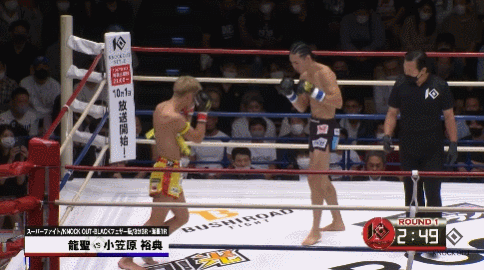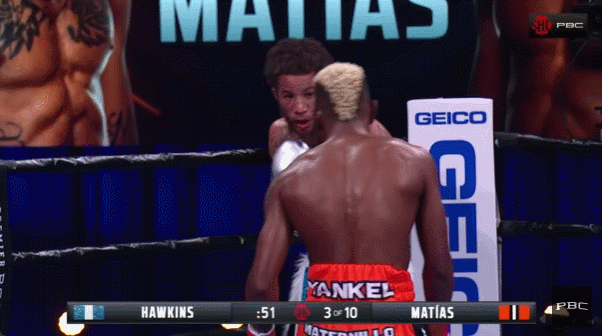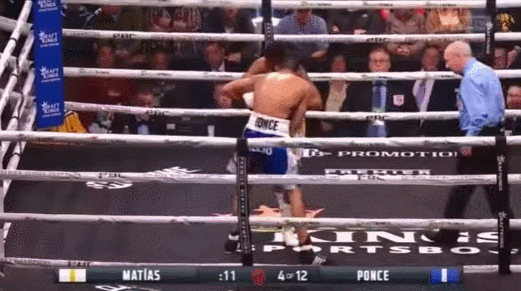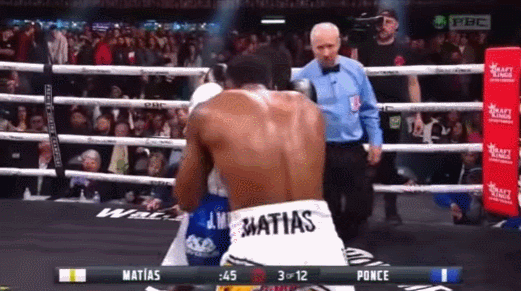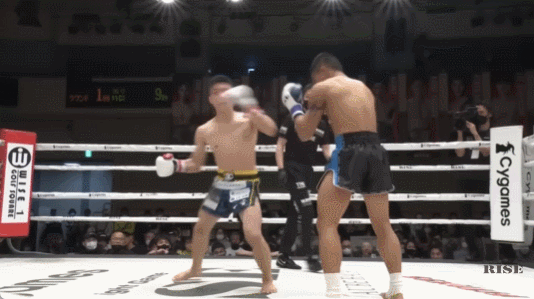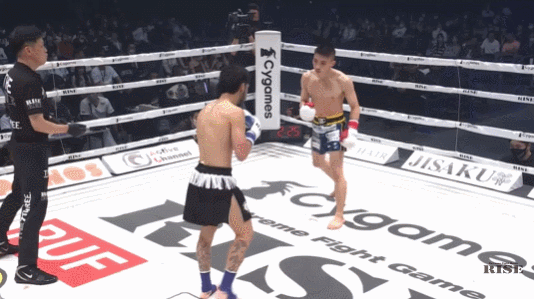3 Strikers You Should Be Studying - June 2023
Slow fight weeks happen but good fight footage will be around forever. That is why I am resurrecting a series from Fightland, in which I was able to share the fighters who excite me and whom I spend my days studying. While this series often includes old timers who have only a couple of fights on black and white film, today’s subjects are all active competitors with their whole careers ahead of them.
Ryusei Kumagai
Following the tradition laid down by Masato, Tenshin and Takeru, Ryusei Kumagai has asked to be billed under one name: Ryusei. Unfortunately, he’s still relatively new to this so a Youtube search for “Ryusei vs” will yield various fights from animes containing a character named Ryusei, and numerous clickbait thumbnails for videos about Ryusei Imai—the viral child star known as Baby Bruce Lee. But should you scroll down a few dozen results you will soon find his fights in the Japanese kickboxing promotion, KNOCK OUT.
The twenty-two year old has only taken fourteen professional bouts, after turning pro in 2019, but his hype is building and KNOCK OUT seem to know that they are onto something good. Like any young Japanese stand out, there have been favourable comparisons to Tenshin Nasukawa but these seem to only go as far as “he is young and talented”, because the two fighters’ styles are almost nothing alike.
What Ryusei lacks in Rolling Thunders and razzle dazzle he makes up with textbook form and a very economical Thai / Japanese kickboxing hybrid. More than most fighters on the J-Kick scene right now Ryusei loves his teep and his jab, but he gets his hurting done with flurries of body punching. What stands out most about Ryusei is less tangible than a big spinning kick or one particularly wicked counter punch, it is that he seems to understand when to leave gaps for his opponent.
Take for instance his jab. It is certainly neat from a mechanical perspective: it is snappy, straight, it comes swiftly out of his guard and goes back there without delay. It is also disconnected from his footwork meaning that he can throw it while moving in any direction. So Ryusei’s fights are full of moments where Ryusei fades away with his feet and his opponent runs onto a stiff punch up the snoot.
A bad kickboxing match—and sadly, the most common kind—is one where the fighters go combination for combination, first Fighter A’s turn and then Fighter B’s. Ryusei’s jab is a weapon that allows him to steal the initiative back just by allowing the opponent to get going only long enough to eat it. Here are a couple of examples from his fight with Gu Taewon. Ryusei pokes with the teep, inviting a return, and then jabs going backwards, getting down behind his lead shoulder to protect himself.
Here is another great example from his fight with Yukinori Ogasawara. This time, facing a more cautious opponent, Ryusei pushes his advantage a bit more and rattles off a few different strikes—none of which land effectively—before taking that half-a-beat pause that invites Ogasawara to open up right onto the jab.
When you are fighting for three rounds and a total of just nine minutes, activity is king. Great kickboxers have lost fights to middling kickboxers just by staying on the defensive a little too long. By establishing a tit-for-tat rhythm and jabbing his opponent as they start their “turn”, Ryusei lands his cleanest connections and also forces the opponent to fight more cautiously.
Another part of Ryusei’s game which deserves special attention is his left hook to the body. The kind of shovel hook that is thrown with the elbow tight to the line of the body, often almost on the hip, and strikes in from the side and upwards through the liver. In July 2022, Ryusei took his first fight in RIZIN and impressed by finishing Kaishi with a beautiful left hook as the latter was trapped along the ropes.
That fight with Yukinori Ogasawara was also finished with a well-placed shovel hook. This one looked like nothing more than a flick of the wrist as Ryusei backed Osagawara onto the ropes, flicked out a jab, and hooked off it to wind Osagawara, before following up with a knee to finish.
The connecting thread between both those terrific left hooks was that both Kaishi and Osagawara were extending their right arm away from their body when the fist struck their liver. This brings us to the most interesting use of Ryusei’s shovel hook: as a means to steal back the initiative.
When Ryusei is forced to shell up and accept the defensive role in fights, the shovel hook can steal the wind from his opponent’s sails as they extend themselves. Sometimes he has to hunch down and eat a right hand to do it, but it very quickly convinces the opponent to halt their attack.
When Gu Taewon caught Ryusei on the back foot in the second round, Ryusei snuck in a shovel hook to settle him down. Gu Taewon persisted, so Ryusei landed another. In the course of the exchange, Ryusei went to the body three times, forcing Gu Taewon to respect the body attack, and then stepped up into a high kick as Gu Taewon’s elbows came back in to protect him.
Subriel Matias
The big names of 140 pound boxing were joined by an outside man back in February, when the awkward Subriel Matias won the vacant IBF junior welterweight belt. In comparison to Josh Taylor and Regis Prograis—the WBO and WBC champions—Matias’ footwork and outfighting is somewhat lacking, but he more than makes up for it by tearing up like a demon on the inside. And in contrast to the WBA champion, Rolando Romero, he actually lands the bombs he throws.
Pressure is Matias’ stock and trade. He moves forward, he presses to the inside, and he unloads with both hands until the opponent falls or gives up. Every fight that he has won, he has sent the fans home early, and the one fight he lost he promptly avenged by beating Petros Ananyan into a ninth round TKO.
Perhaps the most peculiar thing about Subriel Matias is that he forces men to break the great taboo of boxing. Roberto Duran lived with the stigma of quitting for decades after refusing to continue his second fight with Sugar Ray Leonard, and to quit in boxing is still unthinkable to most pros. Yet faced with the prospect of three or four or five more rounds of the same brutal pace, Matias’ last three opponents have simply refused to come off their stools after a break between rounds.
Matias’ raw pressure is best seen against Malik Hawkins who tried to finesse him, then tried to clinch him, then was finally forced to fight him and folded in the seventh round. Matias walked Hawkins down with his hands low and unloaded each time they hit the ropes.
When Hawkins tried to tie up, Matias used his head to post and create space to free his arms and continue punching.
With a little bit of savvy in preventing clinches, Matias forces most of his opponents to try and push him away.
Matias will constantly use the body jab to enter into infighting range, putting his head on the opponent’s chest or shoulder. While the body jab does leave him with little to guard against counter punches, it does make it tougher for the opponent to score a true tie up. If both of their arms are over his shoulders, he can freely hit their body and post his head just as he did with Hawkins above.
Frequently Matias will be pushed out of infighting range and rebound off his right foot with the body jab to get straight back in, continuing the firefight and demoralizing his opponent who thought they would get a break.
On the inside there are a couple of looks that make Matias awkward. These can best be seen in his most recent fight, a bout for the vacant IBF title against Jeremias Ponce. Ponce came out with the clear intention to score an early knockout and had Matias in a shell for the entire first round. In contrast to his more reckless fights against Hawkins and Eniz, Matias kept a tight defence and chipped away at Ponce with partial punches.
A partial punch—according to Jack Dempsey’s terminology—is a punch lacking “purity”: the full weight of the body moving behind it. That does not mean that a partial punch cannot hurt you. The more fights you watch, the more opportunities you get to be surprised that the punch that started the knockout or TKO was softer than a dozen others that had already landed to no effect. One of the benefits of partial punching is that an infighter can clip them off quicker than fully committed swings, and can string together combinations which culminate in stiffer shots.
For instance, Matias will throw a slappy left hook and double it up, turning his whole body into the second left hook. Matias’ short left hook is a great example of what I’ve heard Mark Hatmaker call a “Crunch Hook”. Rather than pivoting on the lead foot and rotating the whole body, the left shoulder is pulled toward the right knee, which remains facing forwards.
Then there is Matias’ uppercut, thrown with the fist vertical as if performing a hammer curl. It sneaks between a double forearms guard more easily than a palm-in uppercut, and he seldom throws it from his legs. It does hurt, however, and it often lifts the opponent’s head onto a hook or double hook.
The perfect mix of pokes, slaps and thuds is what makes Subriel Matias so effective on the inside. This was especially evident against Ponce who threw exclusively power punches and was hurt more by the shorter, lighter punches that Matias flicked back in between.
Kazuki Osaki
The great little secret of Japanese kickboxing is Kazuki Osaki. It is almost worth the hassle of working out how to use Abema from outside Japan just to view his fights. Osaki is on an eighteen fight winning streak, he’s the number one strawweight in the world, and Beyond Kickboxing and Combat Press both rank him in their top five, pound-for-pound. He has also fought three times since January and knocked out each opponent in spectacular fashion. Granted, these were not his stiffest opponents, but his style is a treat for the eyes under any circumstance.
On the surface, Osaki fights like a great many other kickboxers: he covers up and then he returns fire in combination. But Osaki doesn’t simply absorb fire until a break, he wedges himself in and breaks his opponent’s initiative. This is facilitated with a double forearms guard which is deceptively active. He isn’t simply covering up, he is picking off the opponent’s blows while crowding them.
Often Osaki’s elbows are high, pointed at the opponent in that theatrical Daniel Mendoza attitude that the Diaz brothers use for photographs and staredowns. The thickest part of his forearm, just before the elbow, is used to deflect straights and hooks, but the moment an uppercut or knee comes up the centre, Osaki is spiking an elbow directly down onto the strike.
Osaki’s active guard allows him to stand almost on top of his opponent’s toes and then he can punish them as they try to keep their offense going from too close in. Against Nicolas Rivas, Osaki used dipping jabs and calf kicks to break Rivas off—as Musashi would say—”at the s in strike.”
Another one that Osaki loves against orthodox fighters is the lead leg inside low kick. Rather than using it as a point scorer that is then mixed up with other attacks, like Alexander Volkanovski does, Osaki uses the inside low kick for power and occasionally to get in a good right hand behind it. He also eschews a step-up much of the time as his lead foot is often already inside of the opponent’s in an infighting range.
A theme in modern kickboxing, particularly among experienced Thais, is mistiming kicks on the back foot. Throw a kick from a bad ring position, without frames, and the opponent should be hurting you for it. Osaki has done this wonderfully in a number of his fights.
While Osaki is a completely different fighter from Ryusei in his techniques and build, the two share a common strategy: they use their counter-offence to lower the opponent’s activity, and then take over the fight with the flashy combination hitting.


